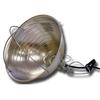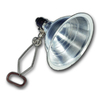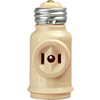Hey man, I tried posting this question in the electrical help thread but didn't get any response. But, from what I've read of your posts - you will have an answer. Here's my question/problem: I bought some of the 68w/2700k cfl's from home depot. I want to use them for a 12/12 from seed grow. I also bought some of the 8.5" clamp lights to use as the fixtures to screw into.
I tried it today and was unsuccessful. First, I tried screwing the bulb into the clamp light. It would start to screw in, but I could tell that the bulb was too big for the light and wasn't screwing in all the way. Next, I screwed an extender into the clamp light, and screwed the bulb into the extender. I plugged it in, it "blinked" on for a fraction of a second, and went out. I tried the same set up again with a different clamp light with the same result.
Then I took the bulb and screwed it into a hallway ceiling light fixture, but it didn't work.
Did I just blow the bulb? Do you know what kind of plug-in fixtures I can use for these bulbs? Thanks so much.












